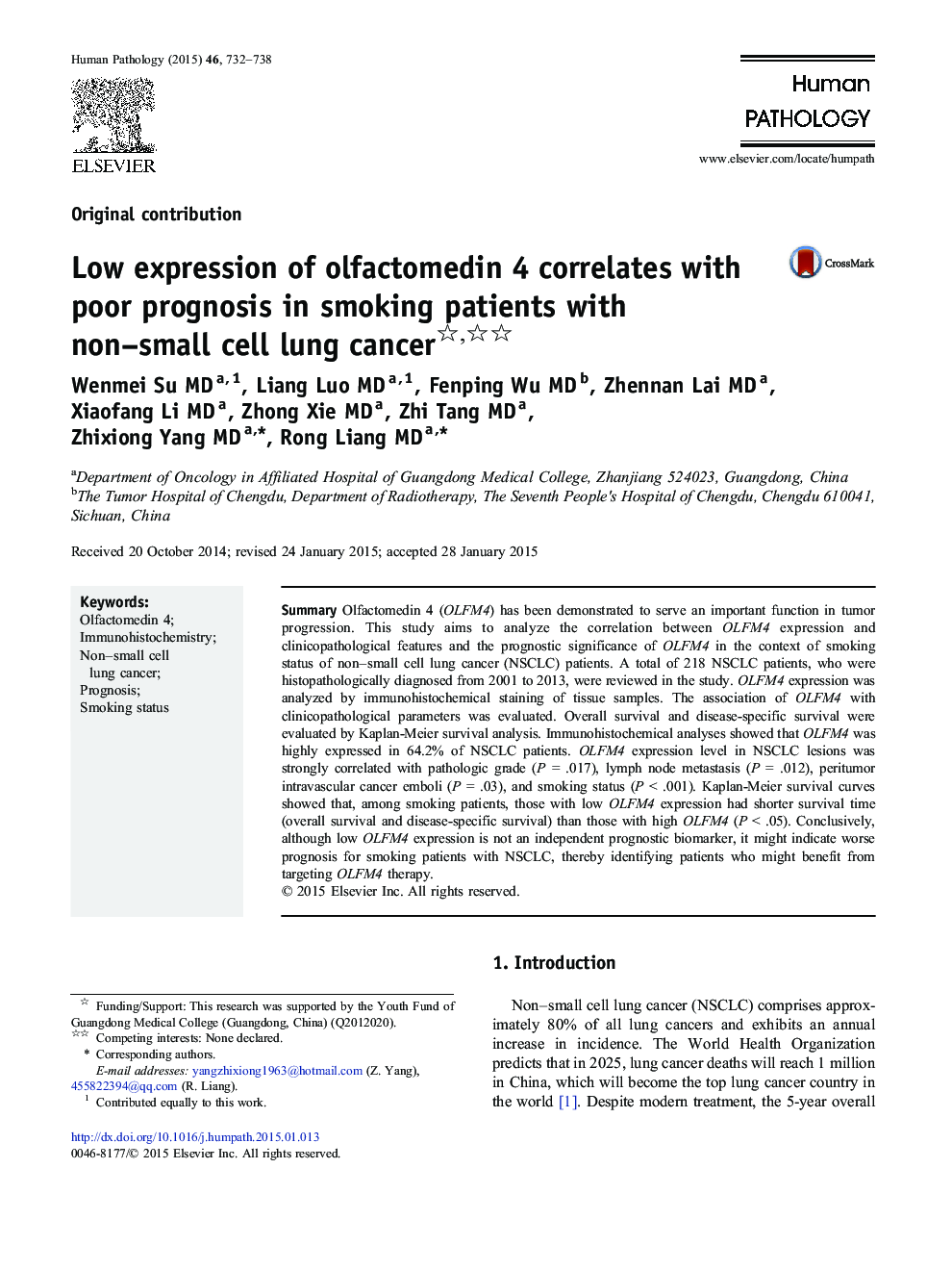| Article ID | Journal | Published Year | Pages | File Type |
|---|---|---|---|---|
| 4132671 | Human Pathology | 2015 | 7 Pages |
SummaryOlfactomedin 4 (OLFM4) has been demonstrated to serve an important function in tumor progression. This study aims to analyze the correlation between OLFM4 expression and clinicopathological features and the prognostic significance of OLFM4 in the context of smoking status of non–small cell lung cancer (NSCLC) patients. A total of 218 NSCLC patients, who were histopathologically diagnosed from 2001 to 2013, were reviewed in the study. OLFM4 expression was analyzed by immunohistochemical staining of tissue samples. The association of OLFM4 with clinicopathological parameters was evaluated. Overall survival and disease-specific survival were evaluated by Kaplan-Meier survival analysis. Immunohistochemical analyses showed that OLFM4 was highly expressed in 64.2% of NSCLC patients. OLFM4 expression level in NSCLC lesions was strongly correlated with pathologic grade (P = .017), lymph node metastasis (P = .012), peritumor intravascular cancer emboli (P = .03), and smoking status (P < .001). Kaplan-Meier survival curves showed that, among smoking patients, those with low OLFM4 expression had shorter survival time (overall survival and disease-specific survival) than those with high OLFM4 (P < .05). Conclusively, although low OLFM4 expression is not an independent prognostic biomarker, it might indicate worse prognosis for smoking patients with NSCLC, thereby identifying patients who might benefit from targeting OLFM4 therapy.
